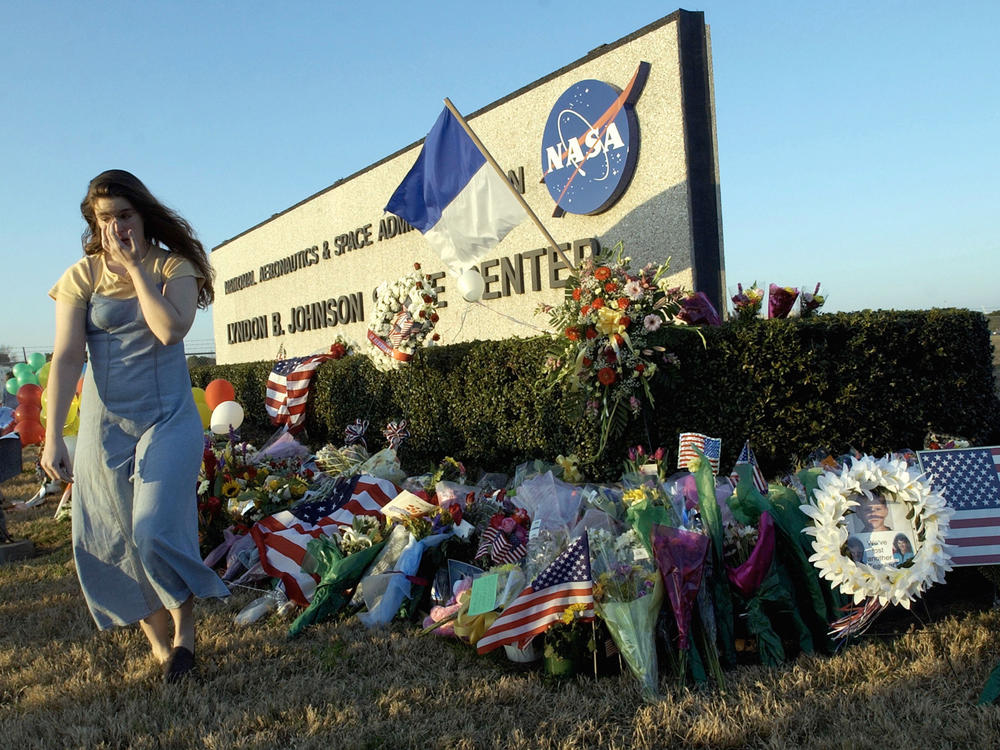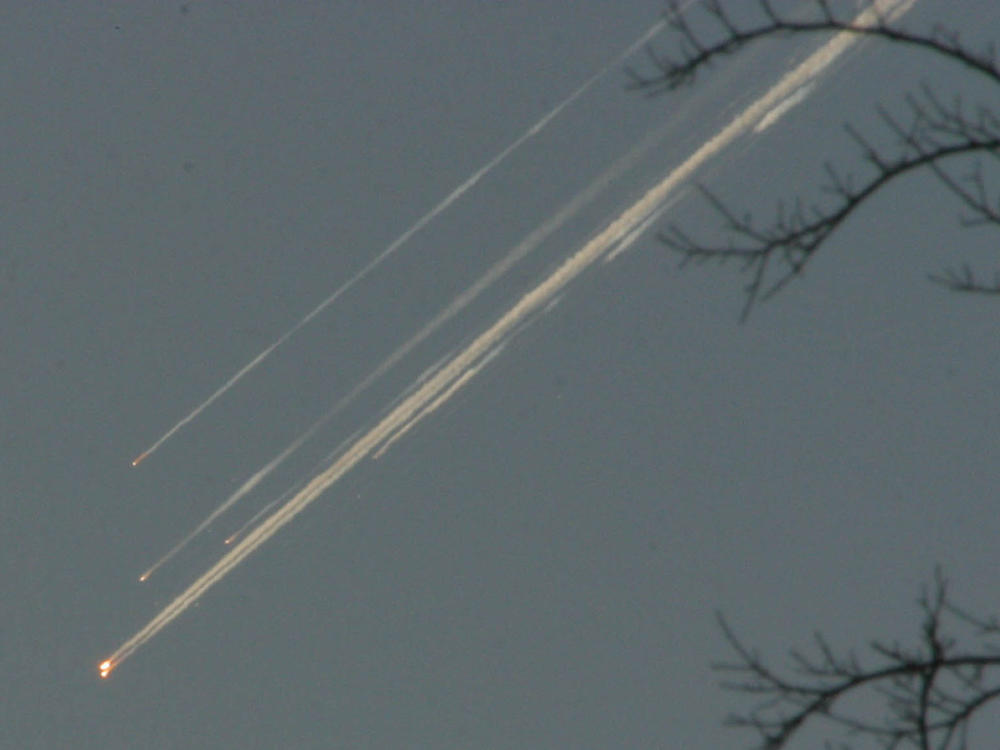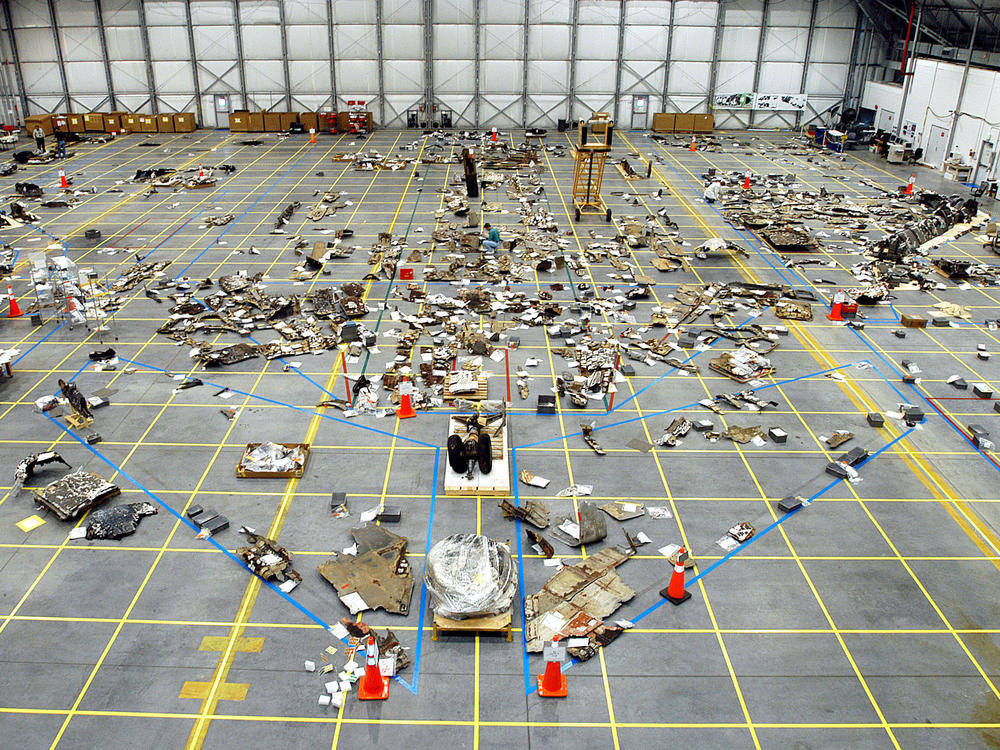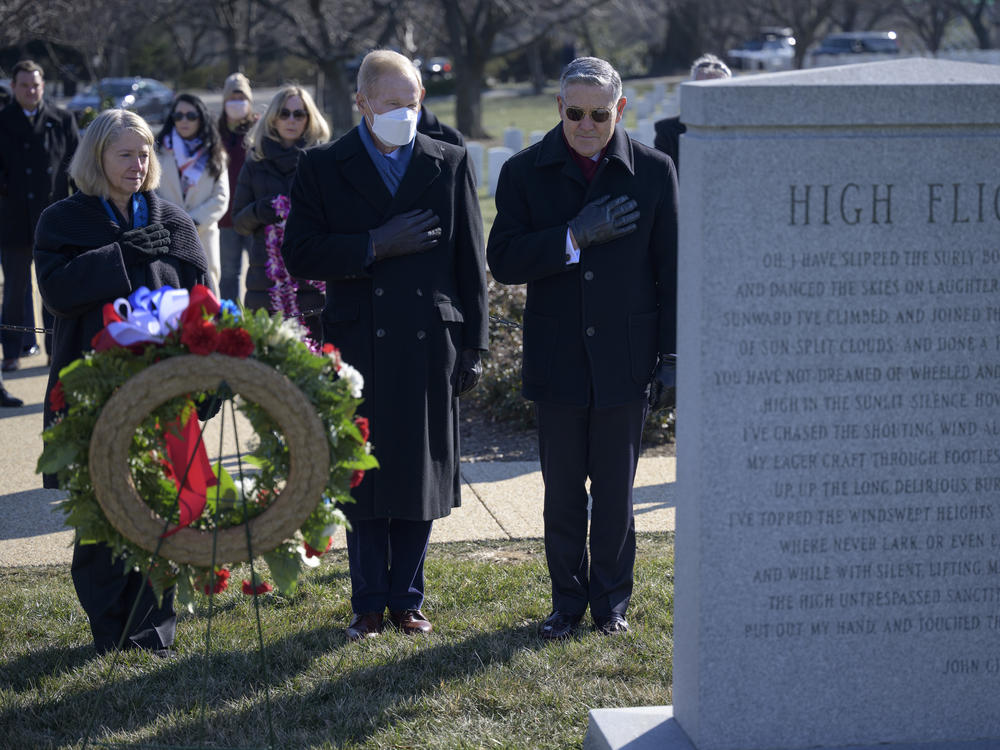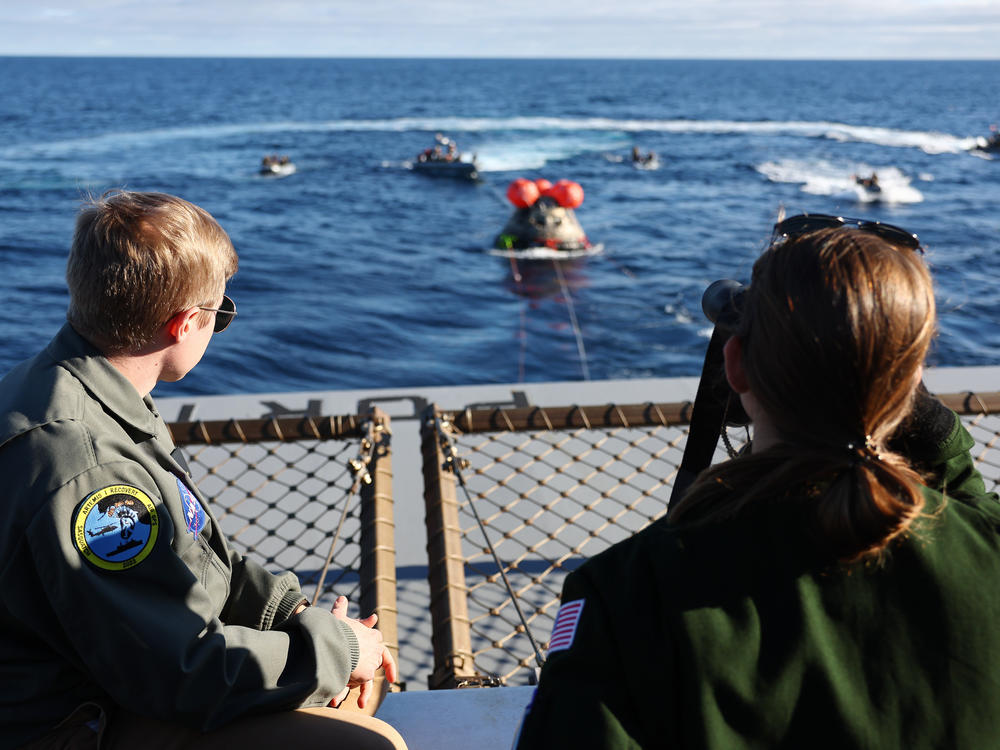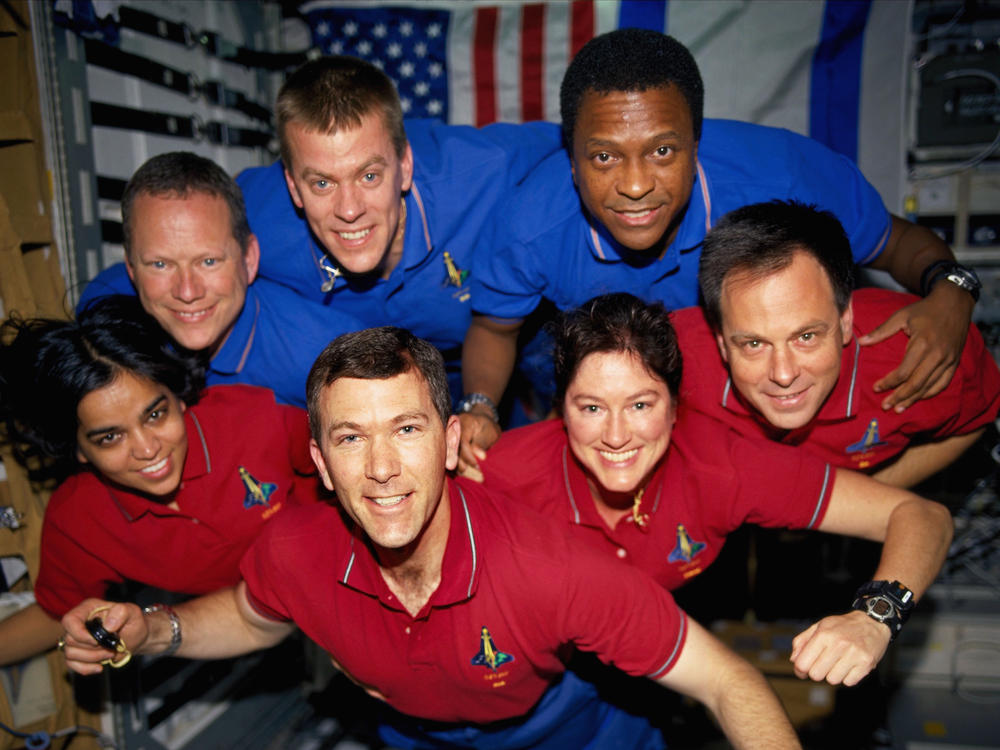Section Branding
Header Content
Twenty years after the Columbia disaster, a NASA official reflects on lessons learned
Primary Content
Updated February 1, 2023 at 10:11 AM ET
It's been exactly 20 years since the Space Shuttle Columbia disintegrated as it returned to Earth, killing all seven astronauts on board: commander Rick Husband, pilot Willie McCool, mission specialists Kalpana Chawla, Laurel Clark, Michael Anderson, David Brown and payload specialist Ilan Ramon of Israel.
Their mission — the 28th flight for Columbia, which became NASA's first shuttle to fly in space some two decades earlier — was focused on research on physical, life and space sciences. The crew spent their 16 days in space conducting some 80 experiments before preparing to return to Florida's Kennedy Space Center on the morning of Feb. 1, 2003.
Instead, the shuttle broke apart over northeast Texas, near Dallas, shortly after reentering Earth's atmosphere and minutes before it was due to land.
Temperature and tire pressure readings from the left side of the shuttle vanished, Mission Control lost contact with the crew and Texas residents saw streaks of smoke in the sky as debris began falling to the ground.
Pam Melroy, NASA's deputy administrator and an astronaut who helped lead part of the Columbia investigation, told Morning Edition's Steve Inskeep that she remembers that day: She was in Florida getting ready to greet the crew.
"The space shuttle is coming back through the Earth's atmosphere at Mach 25, and so it's going to arrive within a second of when it's predicted," she recalled. "And so it was a moment where we all looked around and said, 'How could this be happening? The space shuttle isn't here.' And that's when we realized it wasn't coming back."
An investigation blamed physical and cultural problems
Over the next few weeks, NASA recovered thousands of pieces of debris, including the crew members' remains, across parts of Texas, Arkansas and Louisiana.
And an investigation board released a report later that year detailing the physical and cultural problems behind the disaster.
A piece of foam insulation had broken off the shuttle's propellant tank and hit the edge of its left wing just over a minute into its Jan. 16 launch, which was captured on camera. But the exact location and extent of the damage was not clearly visible to engineers, and NASA management reportedly did not address their concerns during the shuttle's time in space because they believed little could be done about it.
The report found that a hole on the left wing allowed atmospheric gasses to enter the shuttle during its reentry, which caused it to overheat and break apart. It said there were things NASA could have done, like having the crew repair the wing damage or rescuing them from the shuttle.
It also blamed "cultural traits and organizational practices" for minimizing safety issues over the years, as well as low funding and strict scheduling. Investigators called on NASA to be more proactive in its efforts and replace the shuttle with a new system, as well as for more government support.
Melroy says Columbia was top of mind when she commanded a mission to the International Space Station in 2007, especially because she had been part of the 2003 investigation, looking at crew training, equipment and procedures.
"I was very focused on doing everything in my power to use that learning to protect the crew in case of a mishap," she said. "And I think all commanders feel that way, but I know it was very much on my mind throughout the whole mission to use that knowledge and ensure that the crew was as safe as possible. Fortunately, I didn't have to."
NASA suspended space shuttle flights for two years after the Columbia tragedy and went on to retire the space shuttle program altogether in 2011.
NASA says lessons from the past shape its future goals
Melroy says the Columbia disaster had a substantial impact on NASA, as did two other major disasters: the Apollo 1, which caught fire during a pre-launch test in 1967, and the Challenger, which exploded seconds after liftoff on Jan. 28, 1986. She thinks the agency "evolved more" after each of those incidents.
"If people died for this knowledge, we're going to learn from it," she said. "And I think that was the first step. But beyond that, the key lesson that we learned from Columbia was around schedule pressure but also around organizational silence — making sure that voices are heard inside the agency that have concerns about safety and making sure that those concerns get elevated to the right decision-makers."
NASA holds an annual Day of Remembrance to honor astronauts who died in the line of duty. This year's had a special focus on the Columbia anniversary, as Houston Public Media reported.
Evelyn Husband Thompson, the wife of Columbia's commander, spoke on behalf of family members, according to HPM.
"In the past twenty years, the Columbia families have had celebrations, and sorrow, and life experiences," she said. "One of us became a parent, and some of us are now grandparents."
NASA is now preparing for a new era of spaceflight, hoping its Artemis mission will put the first woman and first person of color on the lunar surface by 2025.
Will lessons learned from tragedies like Columbia play a role in those efforts?
"Absolutely," Melroy says. "We are very proud of the lessons that we've learned and we're incorporating them now."
The audio for this story was produced by Ziad Buchh and Mansee Khurana, and edited by Jan Johnson.
Copyright 2023 NPR. To see more, visit https://www.npr.org.
